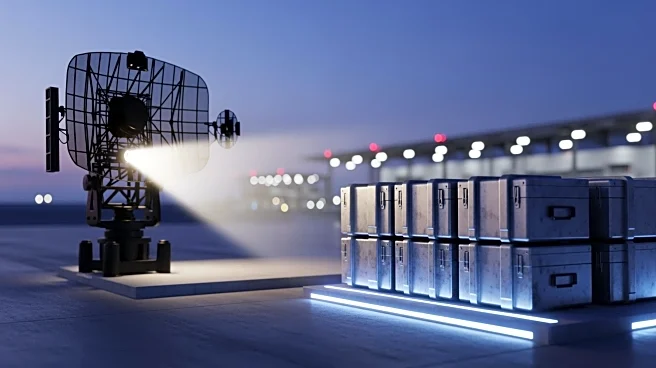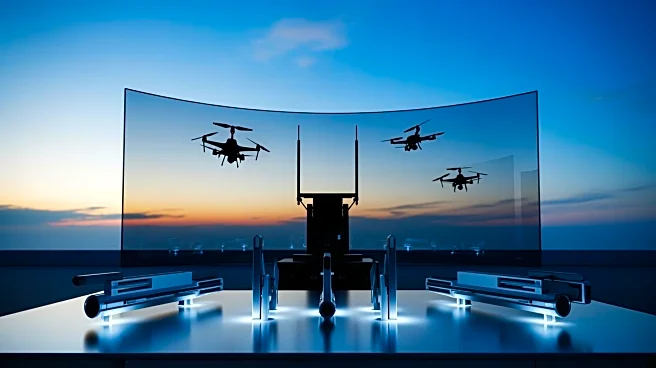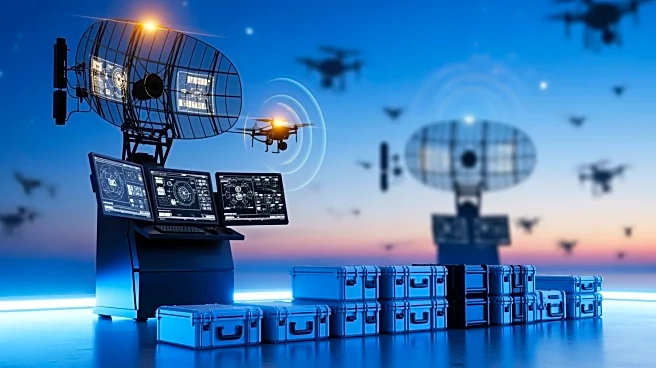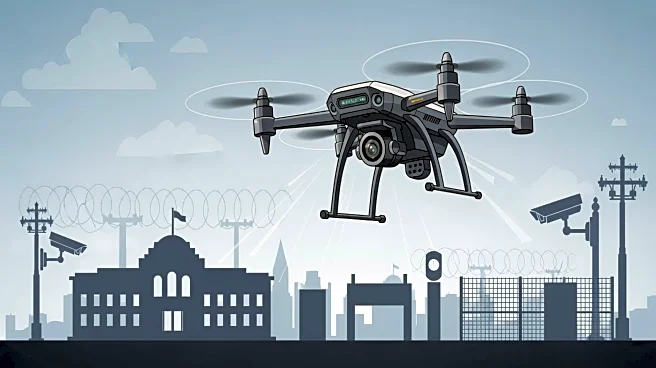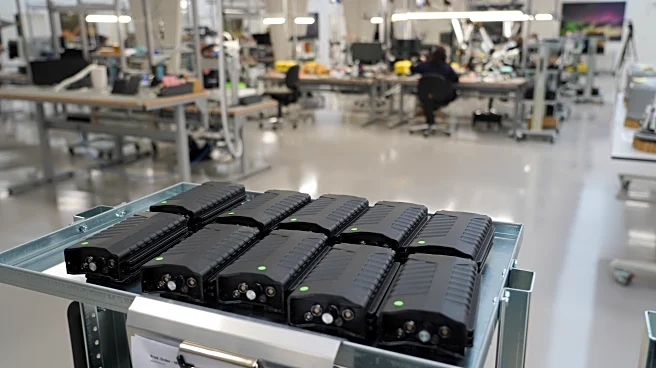What's Happening?
Top officials from Europe's largest military spenders met in Berlin to reaffirm their commitment to Ukraine's defense. They announced measures to strengthen Europe's eastern flank, including deploying
counter-drone forces to Finland and Belgium. Germany committed to delivering $175 million in US-made military equipment to Ukraine, with plans to increase its military aid to $13.4 billion in 2026. The meeting addressed hybrid warfare threats, including drone sightings and cyber warfare, attributed to Russia. The UK and Germany have deployed anti-drone units to Belgium and Finland, respectively, to combat these threats. The EU is considering using frozen Russian assets to support Ukraine financially.
Why It's Important?
The deployment of counter-drone forces and increased military aid highlight the EU's proactive stance in addressing security threats posed by Russia. The commitment to Ukraine's defense is crucial in maintaining stability in Eastern Europe and deterring Russian aggression. The use of US-made military equipment signifies strong transatlantic cooperation in supporting Ukraine. The potential use of frozen Russian assets for funding reflects the EU's strategic approach to leverage economic measures against Russia. These actions reinforce the EU's dedication to safeguarding European security and supporting Ukraine's sovereignty.
What's Next?
The EU plans to present a proposal for cost-effective drone defense at the next meeting in Warsaw. The ongoing collaboration among European nations suggests continued efforts to enhance military capabilities and address hybrid warfare threats. The EU's consideration of using frozen Russian assets for funding may lead to further economic measures against Russia. As the conflict persists, the EU and its allies may explore additional strategies to support Ukraine, including increased military aid and diplomatic efforts to achieve a ceasefire.
